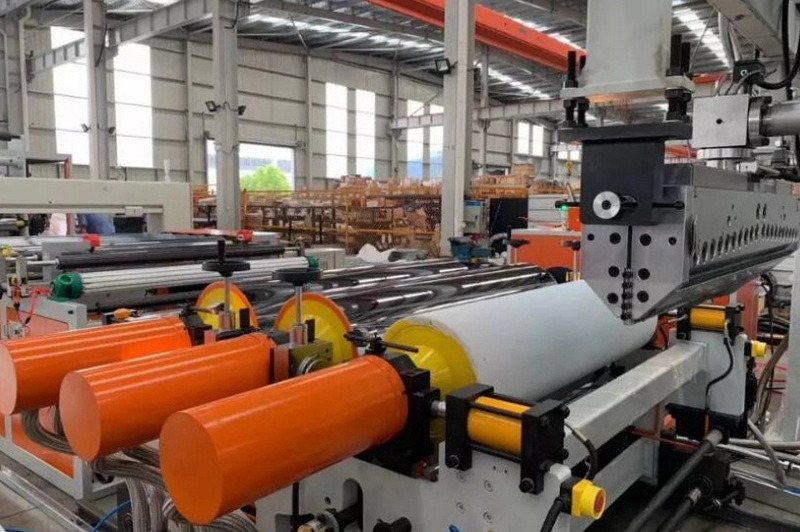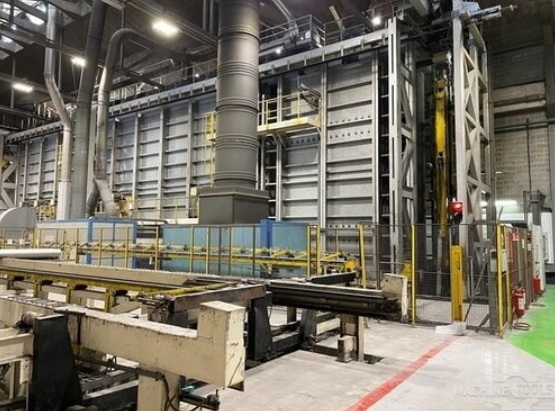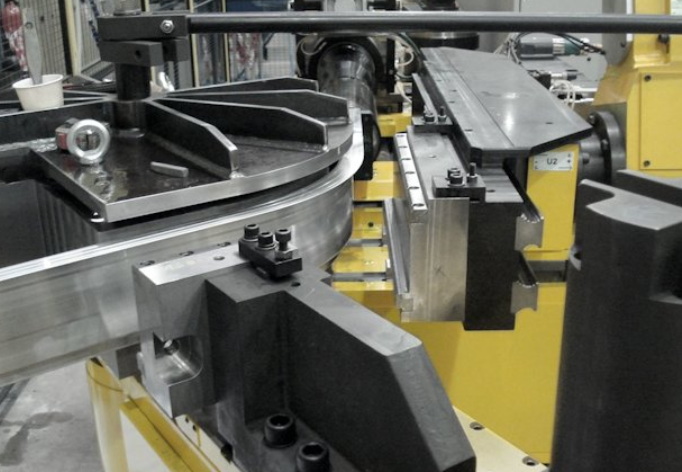Content Menu
● What Is Laboratory Extrusion Equipment?
>> Key Components
● Functions and Capabilities of Laboratory Extrusion Equipment
● Why Laboratory Extrusion Equipment Is Essential for Polymer Research
>> 1. Enables Small-Scale Experimentation
>> 2. Facilitates Rapid Prototyping and Innovation
>> 3. Provides Precise Process Control
>> 4. Supports Material Characterization
>> 5. Simulates Industrial Conditions
>> 6. Enhances Cost and Resource Efficiency
>> 7. Versatility and Customization
● Types of Laboratory Extrusion Equipment
>> Single-Screw Lab Extruders
>> Twin-Screw Lab Extruders
>> Micro Lab Twin-Screw Extruders
● Applications of Laboratory Extrusion Equipment in Polymer Research
● Advantages of Laboratory Extrusion Equipment
>> Enhanced Research and Development
>> Precise Control and Flexibility
>> Cost-Effective Prototyping
>> Reduced Time to Market
>> High Precision and Quality
● Laboratory Extrusion Equipment vs. Industrial Extruders
● How Laboratory Extrusion Equipment Drives Innovation in Polymer Science
● Conclusion
● FAQ
>> 1. What is laboratory extrusion equipment and how does it differ from industrial extruders?
>> 2. How does laboratory extrusion equipment help in developing new polymer materials?
>> 3. What types of polymers and materials can be processed using laboratory extrusion equipment?
>> 4. Why is precise process control important in laboratory extrusion equipment?
>> 5. How does laboratory extrusion equipment support sustainability in polymer research?
● Citations:
Polymer research is a cornerstone of modern materials science, driving innovations in everything from packaging to aerospace, electronics, and biomedical devices. At the heart of this research lies a critical tool: laboratory extrusion equipment. Laboratory extrusion equipment enables scientists and engineers to process, shape, and test polymers under controlled conditions, facilitating the development of new materials and the optimization of existing ones. This article explores why laboratory extrusion equipment is indispensable for polymer research, examining its functions, advantages, applications, and the pivotal role it plays in advancing material science.

What Is Laboratory Extrusion Equipment?
Laboratory extrusion equipment, often referred to as lab extruders, are scaled-down versions of industrial extruders designed specifically for research, development, and small-batch production. These machines typically consist of a feed hopper, a heated barrel, one or more rotating screws, and a die that shapes the molten polymer as it exits the barrel[6][8]. The primary distinction between laboratory and industrial extruders is throughput: lab extruders are optimized for small sample sizes, precise control, and rapid prototyping rather than mass production[3][6].
Key Components
- Feed Hopper: Introduces raw polymer materials into the system.
- Heated Barrel: Melts and conveys the polymer.
- Screw(s): Mixes, compresses, and transports the material.
- Die: Shapes the extruded polymer into the desired form.
- Control Systems: Allow precise regulation of temperature, screw speed, and pressure[1][6].
Functions and Capabilities of Laboratory Extrusion Equipment
Laboratory extrusion equipment is engineered to provide researchers with a high degree of flexibility, control, and efficiency. Its primary functions include:
- Material Research and Testing: Enables the evaluation of new polymers, additives, and formulations on a small scale before scaling up to industrial production[1][3].
- Product Development: Facilitates rapid prototyping and iterative testing, which accelerates the innovation cycle[1][3].
- Quality Control: Allows for the simulation of production conditions and the assessment of product consistency and performance[1][8].
- Process Optimization: Offers the ability to fine-tune process parameters such as temperature, pressure, and screw speed to achieve optimal material properties[1][2][8].
- Education and Training: Provides a safe and manageable platform for training students and new employees in extrusion technology[1].
Why Laboratory Extrusion Equipment Is Essential for Polymer Research
1. Enables Small-Scale Experimentation
One of the most significant advantages of laboratory extrusion equipment is its ability to process small quantities of material. This is particularly important in polymer research, where new materials and additives can be expensive or available only in limited quantities[7]. Small-scale extrusion reduces waste, conserves resources, and allows for multiple experiments to be conducted efficiently[7].
2. Facilitates Rapid Prototyping and Innovation
Laboratory extruders are ideal for rapid prototyping, enabling researchers to quickly produce and test new polymer formulations. This accelerates the development process, allowing for faster iteration and optimization of materials before committing to large-scale production[1][3][7].
3. Provides Precise Process Control
Advanced laboratory extrusion equipment offers precise control over critical process parameters such as temperature, screw speed, and pressure[1][8]. This level of control is essential for investigating the effects of different processing conditions on polymer properties, ensuring reproducibility, and obtaining reliable data for scale-up[2][8].
4. Supports Material Characterization
Lab extruders can be equipped with real-time monitoring tools and analytical sensors, enabling continuous measurement of viscosity, shear rate, and other rheological properties[8]. This data is invaluable for understanding how polymers behave during processing and for optimizing formulations to achieve desired mechanical, thermal, and chemical characteristics[2][8].
5. Simulates Industrial Conditions
Despite their smaller size, laboratory extruders are designed to replicate the conditions of industrial-scale production. This allows researchers to conduct meaningful experiments that can be directly translated to commercial manufacturing, minimizing the risk and cost associated with scaling up new processes[6][8].
6. Enhances Cost and Resource Efficiency
By enabling small-batch production and reducing material consumption, laboratory extrusion equipment lowers the overall cost of research and development. It also minimizes the environmental impact associated with waste generation and energy use, supporting sustainable innovation in polymer science[3][7].
7. Versatility and Customization
Modern laboratory extrusion equipment is highly versatile, capable of handling a wide range of polymers, including thermoplastics, elastomers, biopolymers, and composites[1][6]. Modular designs allow for customization of screw configurations, barrel lengths, and die shapes to suit specific research needs[6][8].

Types of Laboratory Extrusion Equipment
Single-Screw Lab Extruders
Single-screw extruders are commonly used for straightforward melting and shaping operations. They are suitable for basic product development and testing of simple polymer formulations[3][4].
Twin-Screw Lab Extruders
Twin-screw extruders offer superior mixing, compounding, and process control. They are ideal for complex formulations, reactive extrusion, and the incorporation of high-content fillers or additives[3][4][6].
Micro Lab Twin-Screw Extruders
These are specialized for ultra-small batch processing, making them perfect for research involving rare or expensive materials. They provide high precision and repeatability, which is critical for experimental reproducibility[3][4][6].
Applications of Laboratory Extrusion Equipment in Polymer Research
Laboratory extrusion equipment is used extensively across a wide range of applications in polymer research:
- Polymer Development: Creation and testing of new polymer blends, copolymers, and composites[3][4].
- Formulation Optimization: Fine-tuning the ratios of polymers, additives, and fillers to achieve targeted properties[2][5].
- Reactive Extrusion: Carrying out chemical reactions during extrusion to synthesize or modify polymers in a continuous, solvent-free process[2][6].
- Compounding: Homogeneous mixing of polymers with pigments, stabilizers, plasticizers, and other additives[2][3].
- Material Characterization: Measuring rheological and mechanical properties under controlled processing conditions[8].
- 3D Printing Filament Production: Producing custom polymer filaments for additive manufacturing applications[2].
- Recycling Research: Evaluating the processability and properties of recycled polymers and developing new recycling methods[7].
Advantages of Laboratory Extrusion Equipment
Enhanced Research and Development
Lab extruders provide a controlled environment for systematic experimentation, enabling researchers to explore the effects of different variables on polymer behavior and performance[3][4].
Precise Control and Flexibility
With advanced control systems, laboratory extrusion equipment allows for fine-tuning of process parameters, ensuring reproducibility and reliability of experimental results[1][8].
Cost-Effective Prototyping
Small-scale processing reduces material costs and waste, making it feasible to test multiple formulations and process conditions efficiently[3][7].
Reduced Time to Market
By enabling rapid prototyping and iterative testing, laboratory extrusion equipment shortens the development cycle, helping companies bring new products to market faster[1][3].
High Precision and Quality
Modern lab extruders are designed for high precision, ensuring uniform mixing, melting, and shaping of polymers. This is critical for producing high-quality prototypes and test samples[1][8].
Laboratory Extrusion Equipment vs. Industrial Extruders
| Feature | Laboratory Extrusion Equipment | Industrial Extruders |
| Throughput | Low (grams to kilograms per hour) | High (hundreds to thousands of kg/hr) |
| Sample Size | Small (ideal for R&D, prototyping) | Large (mass production) |
| Process Control | Highly customizable, precise | Less flexible, optimized for efficiency |
| Cost and Resource Efficiency | High (minimal material use, low waste) | Lower (requires large material quantities) |
| Application | Research, development, education, QC | Commercial production |
| Flexibility | Modular, easy to reconfigure | Fixed, specialized for specific products |
| Cleaning and Changeover | Fast and easy | Time-consuming, labor-intensive |
How Laboratory Extrusion Equipment Drives Innovation in Polymer Science
The ability to experiment with new materials, process conditions, and formulations on a small scale is fundamental to innovation in polymer science. Laboratory extrusion equipment empowers researchers to:
- Test novel polymers and additives before committing to large-scale production.
- Optimize processing parameters for improved material properties.
- Develop sustainable materials by evaluating recycled or bio-based polymers.
- Accelerate the commercialization of new products through rapid prototyping and testing.
By providing a flexible, efficient, and precise platform for experimentation, laboratory extrusion equipment is the engine that drives progress in polymer research and development.
Conclusion
Laboratory extrusion equipment is essential for polymer research because it bridges the gap between fundamental science and industrial application. It enables small-scale, cost-effective, and highly controlled experimentation, allowing researchers to develop, test, and optimize new polymers and processes with speed and precision. Whether for material development, process optimization, or quality control, laboratory extrusion equipment is an indispensable tool that underpins innovation and progress in the field of polymer science.

FAQ
1. What is laboratory extrusion equipment and how does it differ from industrial extruders?
Laboratory extrusion equipment is a scaled-down version of industrial extruders, designed for research, development, and small-batch production. While industrial extruders are optimized for high throughput and mass production, laboratory extruders focus on small sample sizes, precise process control, and rapid prototyping, making them ideal for experimentation and material development[6][3].
2. How does laboratory extrusion equipment help in developing new polymer materials?
Laboratory extrusion equipment allows researchers to process and test new polymer formulations on a small scale, enabling rapid prototyping and iterative optimization. This facilitates the development of new materials by allowing multiple experiments with minimal resource consumption, reducing time and cost compared to full-scale production trials[1][3][6].
3. What types of polymers and materials can be processed using laboratory extrusion equipment?
Laboratory extrusion equipment is highly versatile and can handle a wide range of materials, including thermoplastics, elastomers, biopolymers, composites, and filled or blended polymers. Its modular design allows for customization to suit specific research needs and material properties[1][6].
4. Why is precise process control important in laboratory extrusion equipment?
Precise process control is crucial because polymer properties are highly sensitive to processing conditions such as temperature, pressure, and screw speed. Laboratory extrusion equipment provides fine-tuned control over these parameters, ensuring reproducibility, reliability, and the ability to systematically study the effects of different variables on material performance[1][8].
5. How does laboratory extrusion equipment support sustainability in polymer research?
By enabling small-scale experimentation, laboratory extrusion equipment reduces material waste and energy consumption, making the research process more sustainable. It also facilitates the development and testing of recycled and bio-based polymers, supporting the advancement of sustainable materials and processes in the polymer industry[7][3].
Citations:
[1] https://www.haisiextrusion.com/What-is-the-function-of-the-lab-extruder-id3440389.html
[2] https://www.thermofisher.com/ge/en/home/industrial/manufacturing-processing/extrusion-compounding-equipment/applications.html
[3] https://www.cowellextrusion.com/understanding-lab-extruder/
[4] https://jieyatwinscrew.com/blog/lab-extruder/
[5] https://jieyatwinscrew.com/blog/polymer-extrusion/
[6] https://jieyatwinscrew.com/blog/what-is-a-lab-extruder/
[7] https://assets.thermofisher.com/TFS-Assets/MSD/Flyers/why-smaller-better-polymer-recycling-fl53483.pdf
[8] https://www.goettfert.com/products/laboratory-extruder
[9] https://www.cowellextrusion.com/understanding-lab-extruder/
[10] https://pmc.ncbi.nlm.nih.gov/articles/PMC7361957/
[11] https://www.sciencedirect.com/topics/engineering/extrusion-process
[12] https://daextrusion.com/applications/laboratory-extruders/
[13] https://www.thermofisher.com/mx/en/home/industrial/manufacturing-processing/extrusion-compounding-equipment.html
[14] https://www.polymers-tech-center.com/extrusion
[15] https://www.plasticsmachinerymanufacturing.com/blow-molding/article/13001454/special-report-lab-extruders-provide-way-to-test-materials-prior-to-production
[16] https://www.mdpi.com/2073-4360/12/6/1306
[17] https://masonslobster.com/pages/mastering-laboratory-extrusion-the-ultimate-guide-to-twin-screw-extruders.html
[18] https://www.cowinextrusion.com/tips-for-operating-and-debugging-the-extruder/
[19] https://omnexus.specialchem.com/selection-guide/an-in-depth-look-at-extrusion
[20] https://onlytrainings.com/troubleshooting-common-issues-in-twin-screw-extrusion-a-practical-guide-for-polymer-experts-onlytrainings
[21] https://www.shaktipharmatech.com/lab-extruder-sle/
[22] https://www.cowinextrusion.com/key-points-to-pay-attention-to-when-selecting-plastic-extruder/
[23] https://www.goodfishgroup.com/plastic-extrusion-company
[24] https://de.scribd.com/document/373377621/Polymer-Processing-Design-Laboratory
[25] https://extruders.leistritz.com/en/applications/plastics/lab-extrusion
[26] https://www.ntnu.edu/mtp/material-extrusion-additive-manufacturing-lab
[27] https://jieyatwinscrew.com/blog/polymer-extrusion/
[28] https://www.intertek.com/polymers-plastics/pilot-plant-processing/






















